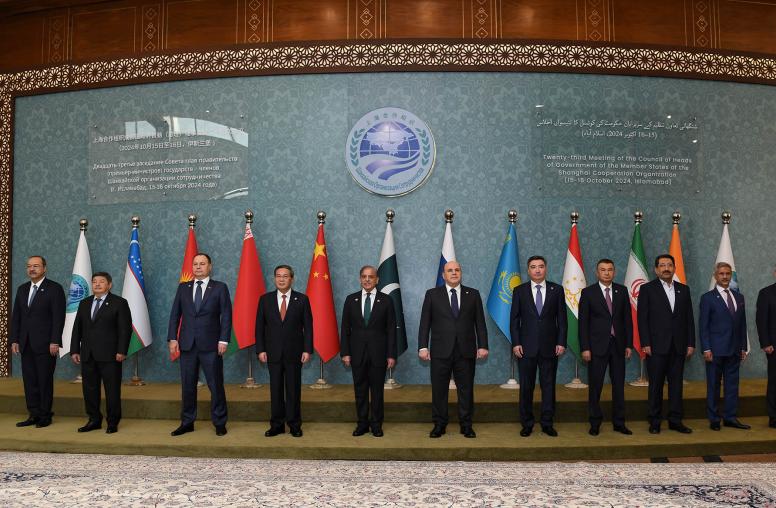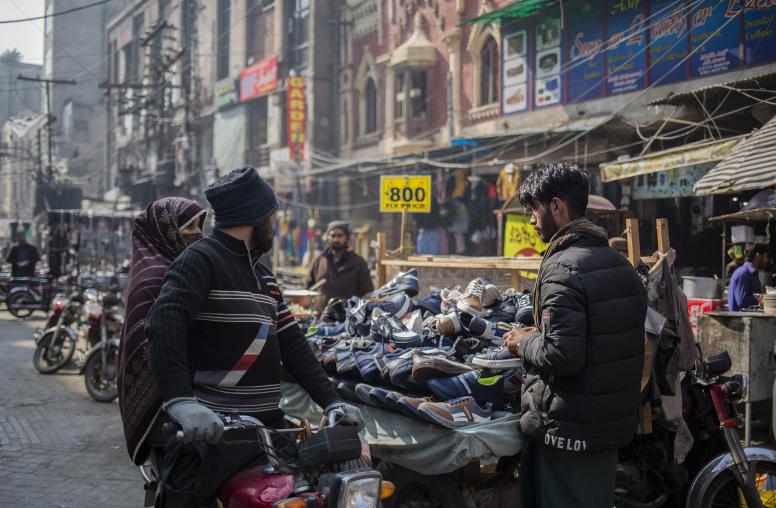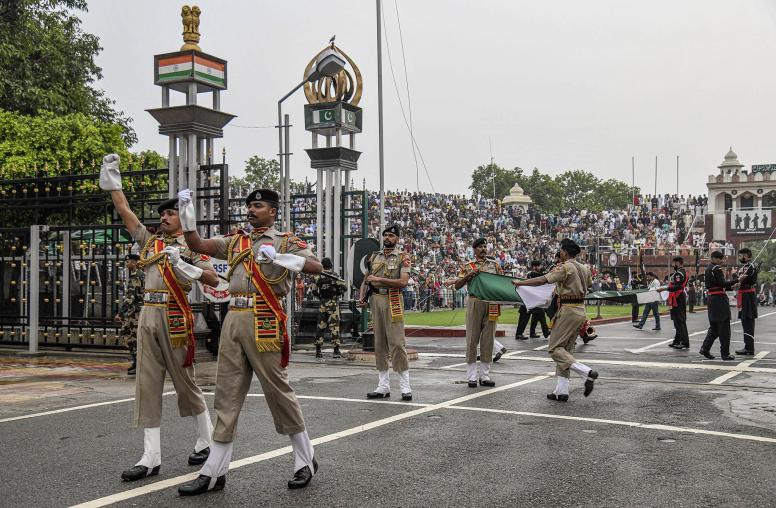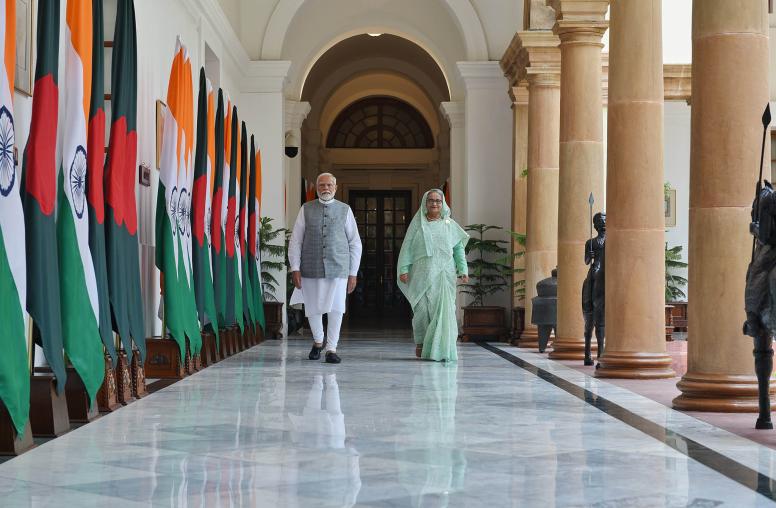Balochistan: Caught in the Fragility Trap
Although reports indicate an improvement in its overall security, Balochistan remains the most fragile province in contemporary Pakistan. This brief examines both the efficacy and motivations behind the state’s recent actions to end persistent conflict in the province.
Summary
- The province of Balochistan is riven by multiple cyclical conflicts and is the most fragile in Pakistan.
- The complicity of politicians, government officials, and security personnel in criminal activity has created a nexus among criminality, militancy, and terrorism.
- With significant new Chinese investment on the horizon, a tentative but notable shift in state attitudes toward criminality and conflict has occurred. The operational capacity of sectarian militant groups has been degraded, and unprecedented initial steps have been taken to address paramilitary corruption.
- However, policy realignments continue to be determined primarily by Pakistan’s military establishment in light of its strategic priorities. Political negotiations between the state and Baloch nationalist groups have stalled.
- While the overall security situation has improved, the rights and needs of Balochistan’s people, and the underlying fault lines that trigger conflict, remain unaddressed.
Fragility
Fragility is borne from a combination of economic, political, institutional, and societal factors (often self- and mutually reinforcing) and is characterized by (1) a high level of insecurity and continuing violence, organized violence, and conflict; (2) weak institutions; and (3) poor governance or the lack of equitable delivery and distribution of public goods and services. The circular nature of the defining factors lies at the “heart of the concept of the fragility trap.”1 Perhaps the most definitive aspect of fragility—and one that links it to conflict—is institutional weakness or lack of political and performance legitimacy.
State fragility, however, is not an either-or situation and instead “varies along a continuum of performance, as well as across areas of state function and capacity.” The broader terminology of situations of fragility better captures the concept2 and is defined as
periods when states or institutions lack the capacity, accountability, or legitimacy to mediate relations between citizen groups and between citizens and the state, making them vulnerable to violence.3
Situations of fragility are also encapsulated in the concept of the “parallel state,” where there is “existence of a clandestine nexus between formal political leadership, self-serving factions within the state apparatus, organized crime, and/or experts in violence.” Fragile situations are also marked by the coexistence of both formal and informal institutions, with competing claims to power. The formal state is weakened or operates with informal or competing rules of the game.4
Violence or the threat of outbreak of violence in fragile situations is often averted due to an “elite pact,” enforced through coercion and patronage among “holders of political, military, or economic power.”5 The motivation in such instances is largely “the wish to contain violence and to secure the property and economic interests and opportunities of pact members.”6 While such elite pacts maintain the peace through renegotiation, they are unable to eradicate the threat of violence and, unless accompanied by “transformation in state-society institutions and better governance outcomes,” remain susceptible to the “same stresses that precipitated fighting in the first place.”7 Hence, the vicious cycle of violence becomes more difficult to break or escape over time.
The Balochistan Situation
Balochistan is the most fragile province in contemporary Pakistan. The Pakistani state has chosen to govern Balochistan by striking alliances with willing tribal/political elites in return for access to the state’s resources of power and patronage. The breakdown of these elite pacts invariably culminates in violent uprisings against the state, which, in turn, are suppressed by the military and foster a new cycle of violence followed by another elite pact. These ongoing cycles define Balochistan’s fragility trap.
Balochistan’s conflicts have multiple fault lines: the principal conflict between the state and nationalists (the military and armed militant groups); inter- and intra- tribal feuds and clashes; and ethnic and sectarian conflicts, as a consequence of the militarized state’s policy of Islamicization. These situations have, over the years, provided cover for increasing organized violent crime. The conflict situation is further complicated by the involvement of several foreign states with an economic or political stake in the mineral-rich province.
Multiple Conflicts
Nationalist
Lack of control over natural resources and the dominance of the central government have been a constant theme in Balochistan nationalist grievance discourse and a trigger for conflict; critically, in recent years, so has the lack of provincial control in matters relating to development of the Gwadar Port in southern Balochistan. Additionally, grievances related to political victimization and state oppression persist. Since 2005, human rights organizations have recorded numerous serious human rights violations by security forces: extrajudicial executions, torture, enforced disappearances, forced displacement, and excessive use of force. In turn, Baloch nationalists have sporadically attacked government installations, buildings, and security force personnel.8
Sectarian
Sectarian militancy and violence in Balochistan, part of the wider sectarian conflict in Pakistan, have risen exponentially over the last decade. The prime targets of sectarian violence in Balochistan have been the Shia community, particularly the Shia Hazaras, at the hands of the Lashkar-e-Jhangvi (LeJ), which identifies as an anti-Shia, anti-Iran militant group.9 In recent years, Pakistani authorities have also accused LeJ, in collaboration with the Pakistani Taliban, of masterminding armed attacks on Pakistani state targets;10 although there has also been a complex and contradictory but close historical relationship between the state and the LeJ both in Balochistan and beyond.11
Ethnic
Since the beginning of the latest armed insurgency in 2006, dozens of non-Baloch people have been threatened, attacked, and killed by Baloch nationalists.12 Hundreds of teachers—especially ethnic Punjabis and Urdu-speakers, known as “settlers” in the province—have sought transfers out of Balochistan, bringing the education system to near collapse.13 Punjabi settlers are not the only ethnic group to have come under attack; in May 2015, more than twenty Pashtun laborers were taken off two Karachi-bound buses at gunpoint and shot.14
Criminality and Violence
Balochistan’s multiple conflicts have created an enabling environment for criminal elements and groups to cement their presence and activity in the province. Members of threatened ethnic groups, government personnel, and local nongovernmental and foreign aid workers are frequently kidnapped for ransom. Such episodes have played a significant role in spreading terror and restricting travel and movement within Balochistan.
Approximately one-third of drugs from Afghanistan, the region’s major producer, are smuggled via the coastal region of Balochistan. According to the United Nations (UN) Office on Drugs and Crime, approximately $30 billion worth of drugs are smuggled from Afghanistan via Pakistan to other countries.15 Similarly, there is a substantial market for smuggling arms and weapons from Afghanistan into Balochistan and on to other parts of Pakistan.16 Balochistan is also the principal route for smuggling migrants from Central Asia, Afghanistan, and Iran to destinations in Europe and beyond.
There have been long-standing allegations of connivance and complicity by government and security agencies in these criminal activities,17 which fuels a thriving parallel and underground economy and contributes to a nexus between criminality and terrorism.18
Breaking the Fragility Trap
Between 1972 and 2013, political governments attempted—without any enduring success—to address Balochistan’s grievances, improve the level of socioeconomic development and governance, and break the cycles of violent conflict by introducing institutional reforms. Notable measures included the raising of provincial status within a federal structure defined by the 1973 Constitution; greater control over provincial affairs and resources and an increased share in divisible financial resources according to the Aghaz-e-Huqqooq-e-Balochistan, the Seventh National Finance Commission (NFC) Award (2009); and provincial autonomy according to the 18th Amendment to the Constitution (2010).
Since 2013, Pakistan’s strategic and economic imperatives have been spurring the state to significantly alter Balochistan’s fragility matrix to the advantage of a new set of clients and patrons. The game-changer appears to be the China-Pakistan Economic Corridor (CPEC)—a 3,000 km network of roads, railway, and pipelines running from Balochistan’s Gwadar Port to China’s Xinjiang region and linked Chinese investment in Pakistan energy and other sectors—formally announced in April 2015.19 The importance Pakistan has attached to this initiative is evident by the military’s creation of a special security division (comprising well over ten thousand troops) for the protection of Chinese personnel associated with CPEC.20 In January 2016, the Pakistani navy announced an increase in surveillance at Gwadar Port and the raising of a “special Marine Battalion…for [the] security of Gwadar, Chinese engineers, and delegates visiting the port.”21
Recent actions to defuse the other “hot” conflicts, both sectarian and nationalist, have to be understood in the context of Pakistan’s absolute strategic prioritization of CPEC and Balochistan’s centrality to the latter.
Sectarianism
LeJ leader Malik Ishaq was killed in a police shootout in July 2015.22 Earlier, Usman Saifullah Kurd, the LeJ Balochistan chief, was killed by security forces in February 2015.23 The killings of Kurd and Ishaq signal a shift in the Pakistani security force’s relationship with the LeJ, and there has been a decline in attacks on Shia Hazaras in Balochistan as the organization struggles to cope with the loss of its leadership and the Pakistani state’s shift away from a policy of strategic ambivalence. For the CPEC to move forward, the LeJ’s criminal activities cannot continue unchecked. Further, the ending of UN sanctions on Iran and the economic advantages inherent therein also bode ill for the organization’s utility to Pakistan’s transforming strategic and economic interests.24 However, the LeJ is not anywhere near being eliminated in Balochistan or beyond.
Baloch Separatism
The Balochistan provincial government (June 2013–December 2015), led by Chief Minister Abdul Malik Baloch, initiated a new round of clandestine negotiations with Baloch rebel leaders. On August 5, 2014, it was reported that several major Baloch insurgent groups had agreed to negotiate with the Pakistani state.25 On August 27, Brahamdagh Bugti, leader of the separatist Baloch Republican Party, announced his party would drop calls for independence if “the Baloch people agree.”26 The provincial government welcomed this olive branch, and in November, Bugti claimed to have met the chief minister, Malik Baloch, several times.27 However, while a Balochistan government source claimed that agreement was reached on 90 percent of the issues, Bugti insisted that the chief minister had no authority to negotiate with him.28 The military concurrently intensified its actions against intransigent militants, depriving the chief minister of any meaningful negotiating authority.29 Malik Baloch left office in December 2015 as part of a coalition agreement with the Pakistan Muslim League-Nawaz party, and the momentum on these negotiations appears to have since stalled.
Criminality
There has recently been a tentative but significant shift in state attitudes toward the nexus between criminality and conflict. The Frontier Corps (FC), the lead security agency in Balochistan, has been consistently accused of involvement in smuggling and corruption.30 The military’s traditional response has been of angry denial and little or no tolerance for allegations that the FC’s corruption, incompetence, and links to extremist groups has exacerbated the security crisis.31 However, one day after Pakistan’s army chief, General Raheel Sharif, declared a causal relationship between corruption and terrorism on April 19, 2016, the military appeared to acknowledge the same within its own ranks in Balochistan.32 In an unprecedented shift, the military leaked the names of six senior officers dismissed from service for corruption in Balochistan. These included Lieutenant General Obaidullah, head of the FC from 2010 to 2013, Major General Ejaz Shahid, his successor, and three one-star generals.33
Beyond the FC, in May 2016, the National Accountability Bureau arrested Balochistan’s finance secretary for corruption, recovering $7.25 million from his home.34 And earlier, in fall 2015, investigations were begun against senior police officers accused of myriad corrupt practices, including smuggling oil from Iran.35 The economic opportunities offered by the end of international sanctions on Iran and the security imperatives of CPEC necessitate a legalizing of cross-border trade.36 However, it is unclear whether these measures are indicative of a sustained policy for dismantling the nexus between state institutions, criminal mafias, and militant groups.
Movement Forward or Yet Another False Start?
Evidently, multiple realignments have taken place in Balochistan over the last three years. But these realignments continue to be determined primarily by the strategic and economic priorities of Pakistan’s military establishment rather than as a consequence of a broader political compact for peace in the province.
While there are some indications that the overall security situation has improved, the rights and needs of Balochistan’s people remain unaddressed. Citizens continue to live with a sense of heightened insecurity, rattled by persistent violence. Comparative levels of social and economic development remain abysmally low, and the perception of deprivation, exploitation, and political alienation remains alarmingly high.37
Hence, as of now, the underlying fault lines remain unaddressed. The transfer of governance responsibility and increased financial resources under the eighteenth constitutional amendment and seventh NFC award, respectively, continue to be impeded by the state’s poor reach and lack of organizational structure in the province. The resultant absence of citizen confidence in formal state institutions complicates the pursuit of sustainable peace.
Even if some level of peace in Balochistan can be achieved by state co-option of significant tribal leaders, militant groups, and criminal elements, and by the killing of those who refuse to be co-opted, it is highly unlikely that this tried, tested, and failed process will do anything to end the cycle of violence or break the fragility trap.
Notes
- European University Institute, “Fragility: Drivers and Consequences,” in European Report on Development—Development in a Context of Fragility: Focus on Africa (Florence: European University Institute, 2009), 19.
- Frances Stewart and Graham Brown, Fragile States: CRISE Overview 3 (Oxford: Centre for Research on Inequality, Human Security and Ethnicity, 2010).
- World Bank, World Development Report 2011: Conflict, Security, and Development (Washington, DC: World Bank), xvi.
- Claire Mcloughlin, Topic Guide On Fragile States (Birmingham: Governance and Social Development Resource Centre, 2009).
- World Bank, World Development Report 2011, xv.
- Ibid.
- World Bank, World Development Report 2011, 88.
- Human Rights Watch, ‘We Can Torture, Kill, or Keep You for Years:’ Enforced Disappearances by Pakistan Security Forces in Balochistan (New York: Human Rights Watch, 2011).
- The LeJ’s murderous policy toward the Shia is encapsulated in a letter written in Urdu. See AnnexII in Human Rights Watch, ‘We Are the Walking Dead:’ Killings of Shia Hazaras in Balochistan, Pakistan(New York: Human Rights Watch, 2014), www.hrw.org/sites/default/files/reports/pakistan0614_ForUplaod.pdf; and for further backgroud on the Lej: Tony Cartalucci, “Destroying a Nation State: US-SaudiFundedTerrorists Sowing Chaos in Pakistan,” Center for Research on Globalization, February 12, 2013, www.globalresearch.ca/destroying-a-nation-state-us-saudi-funded-terrorists-sowing-chaos-in-pakistan/5323295.
- “The Release of Malik Ishaq,” The Express Tribune, July 15, 2011, http://tribune.com.pk/story 210440/the-release-of-malik-ishaq/.
- Human Rights Watch, ‘We Are the Walking Dead.’
- Human Rights Watch, “Pakistan: Balochistan Militants Killing Teachers,” Human Rights Watch, December 13, 2010, www.hrw.org/news/2010/12/13/pakistan-balochistan-militants-killing-teachers.
- For example, in 2009, government schools remained open for 120 days in Balochistan, compared with 220 days in the rest of Pakistan
- Mohammad Zafar, “Mastung Attack: Home Minister Blames RAW as Death Toll Climbs to 22,” The Express Tribune, May 30, 2015, http://tribune.com.pk/story/894726/mastung-tragedy-relatives-stage-protest-outside-governor-house/.
- United Nations Office on Drugs and Crime (UNODC), World Drug Report 2012 (Vienna: UNODC, 2012).
- Moeed Yusuf (ed.), Pakistan’s Counterterrorism Challenge (Washington, DC: Georgetown University Press, 2014), 161.
- Ali Akbar, “Zardari Invites Political Leaders for Iftar and Dinner,” Dawn, June 19, 2015, www. dawn.com/news/1188987/zardari-invites-political-leaders-for-iftar-and-dinner.
- “’Across the Board Accountability’ Essential for Prosperous Pakistan: Gen Raheel,” Dawn, April 19, 2016, www.dawn.com/news/1253087; and Mateen Haider, “Gen Raheel Dismisses 6 Army Officers from Service Over ‘Corruption,’” Dawn, April 22, 2016, www.dawn.com/news/1253497.
- “China’s Xi Jinping Agrees $46bn Superhighway to Pakistan,” BBC News, April 20, 2015, www. bbc.com/news/world-asia-32377088.
- Saeed Shah and Josh Chin, “Pakistan to Create Security Force to Protect Chinese Workers,” The Wall Street Journal, April 22, 2015, www.wsj.com/articles/pakistan-to-create-security- force-to-protect-chinese-workers-1429701872.
- News Desk, “Special Marine Battalion to Protect Gwadar Port, Chinese Engineers,” The Express Tribune, January 5, 2016, http://tribune.com.pk/story/1022261/special-marine-battalion-to-protect-gwadar-port-chinese-engineers/.
- “Malik Ishaq: Pakistan Sunni Militant Chief Killed by Police,” BBC News, July 29, 2015, www.bbc. com/news/world-asia-33699133.
- Anwer Abbas, “Top LeJ Commander Killed in Quetta Op,” The Nation, February 16, 2015, http://nation.com.pk/national/16-Feb-2015/top-lej-commander-killed-in-quetta-op.
- Mohammad Zafar, “Oil Deals: The Expected Hit to Smugglers,” The Express Tribune, February 15, 2016, http://tribune.com.pk/story/1046860/oil-deals-the-expected-hit-to-smugglers/.
- Abdul Manan, “PM House Meet-Up: Baloch Insurgent Groups in Dialogue with Govt,” The Express Tribune, August 5, 2015, http://tribune.com.pk/story/932402/pm-house-meet-up-baloch-insurgent-groups-in-dialogue-with-govt/.
- Adil Shahzeb, “Balochistan Rebel Leader Brahamdagh Bugti ‘Ready to Talk,’” August 27, 2015, BBC News, www.bbc.com/news/world-asia-34077864.
- “Brahamdagh Met Dr Malik Baloch, Discussed Balochistan Issue,” Dawn, November 11, 2015, www.dawn.com/news/1218938.
- Ibid.
- “Pakistan Announces Surrender of 140 Rebels in Balochistan,” Reuters, April 19, 2016, http://gulfnews.com/news/asia/pakistan/pakistan-annouces-surrender-of-140-rebels-in-balochistan-1.1716887.
- Ali Akbar, “Zardari Invites Political Leaders for Iftar and Dinner.”
- Malik Siraj Akbar, “Pakistan’s War Against Human Rights Watch,” The Huffington Post, April 6, 2013, www.huffingtonpost.com/malik-siraj-akbar/pakistan-human-rights-watch_b_2612306.html.
- “'Across the Board Accountability' Essential for Prosperous Pakistan: Gen Raheel.”
- Haider, “Gen Raheel Dismisses 6 Army Officers from Service Over ‘Corruption.’”
- Syed Ali Shah, “NAB Recovers Rs730m from Balochistan Finance Secretary’s Residence,” Dawn, May 7, 2016, www.dawn.com/news/1256686.
- Malik Asad, “Senior Police Officers Smuggling Iranian Oil,” Dawn, September 7, 2015, www. dawn.com/news/1205406.
- Zafar, “Oil Deals: The Expected Hit to Smugglers.”
- Haroon Jamal, Districts’ Indices of Multiple Deprivations for Pakistan, 2011 (Karachi: Social Policy and Development Centre and United Nations Development Program, 2012); and Balochistan Welfare Indices (Districtwise HDI and IMD), Government of Balochistan, Planning & Development Department.
About ths Brief
Beset by multiple cyclical conflicts, Balochistan remains the most fragile province in Pakistan. This brief discusses recent attempts at ending the violence, as well as prospects for breaking out of the “fragility trap” as a consequence of the China-Pakistan Economic Corridor project. Ali Dayan Hasan is a senior advisor at the Islamabad-based Jinnah Institute.



